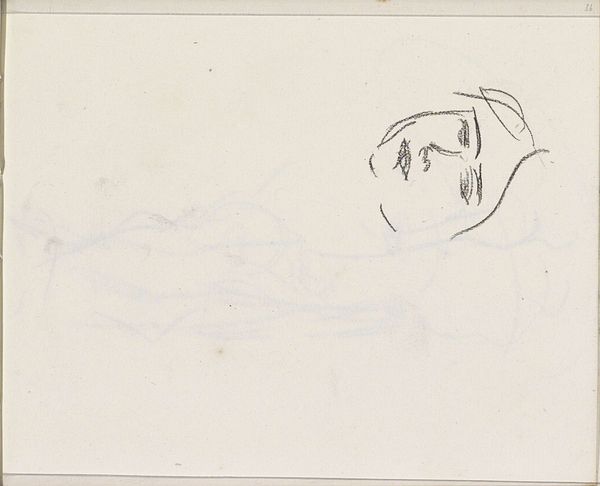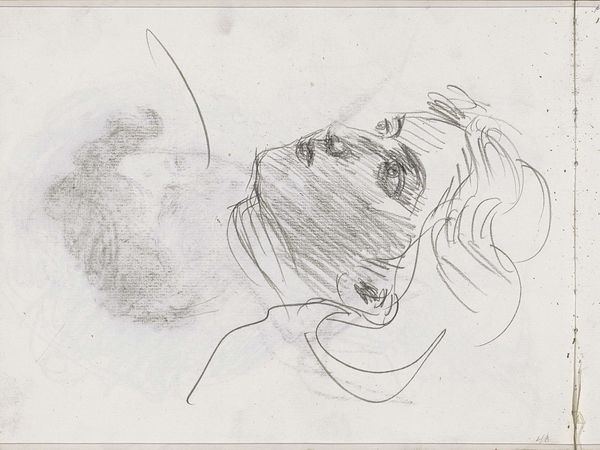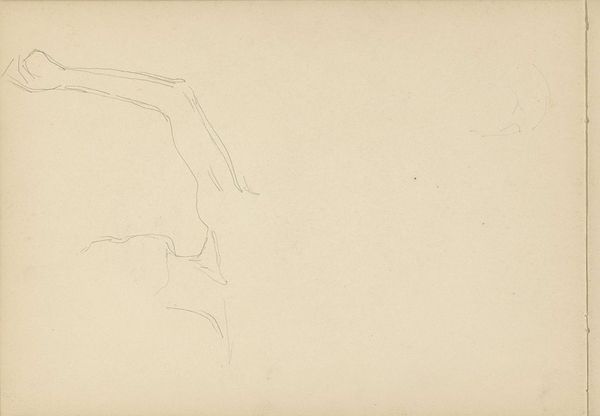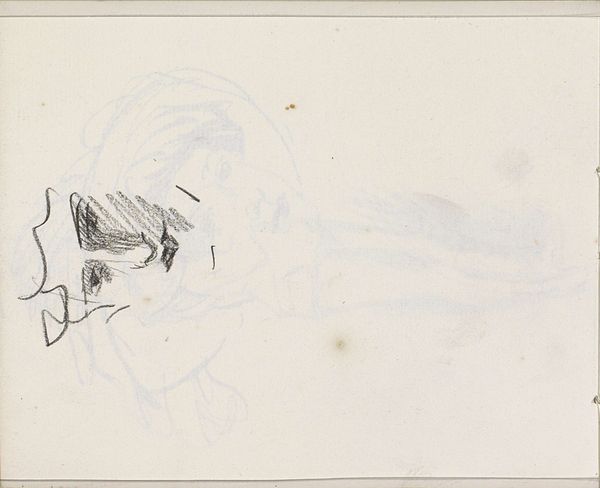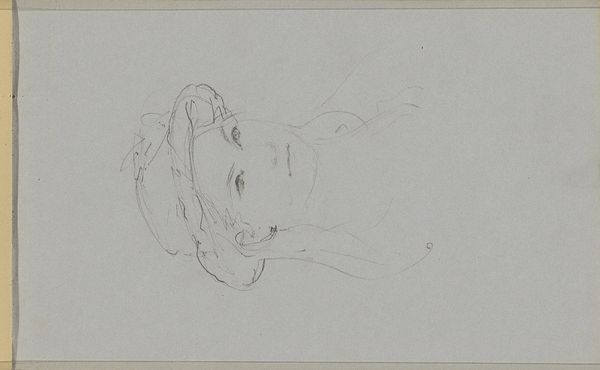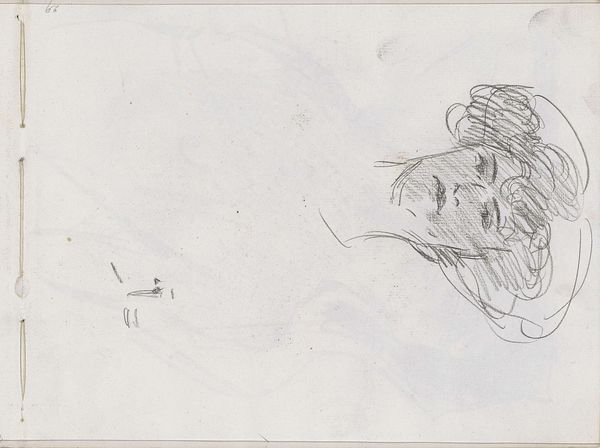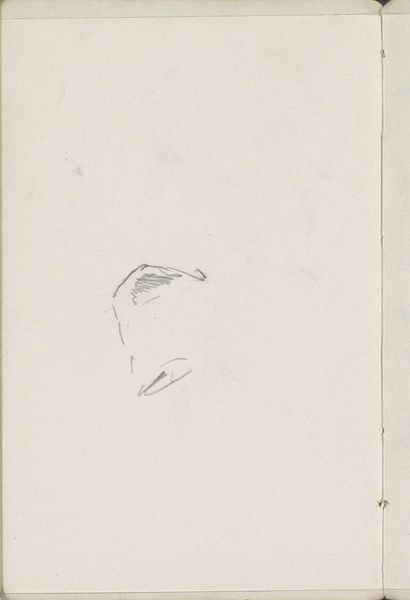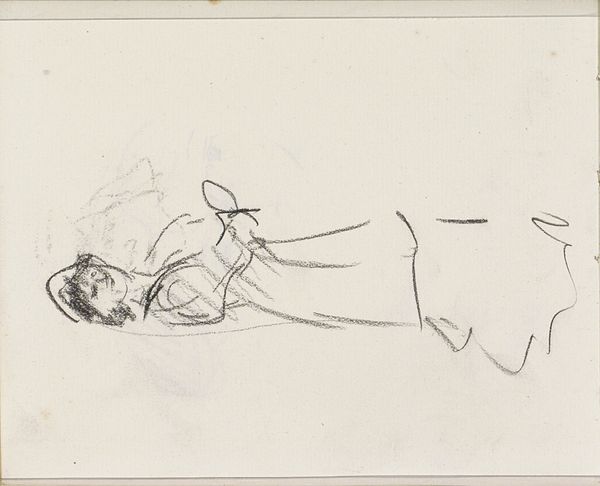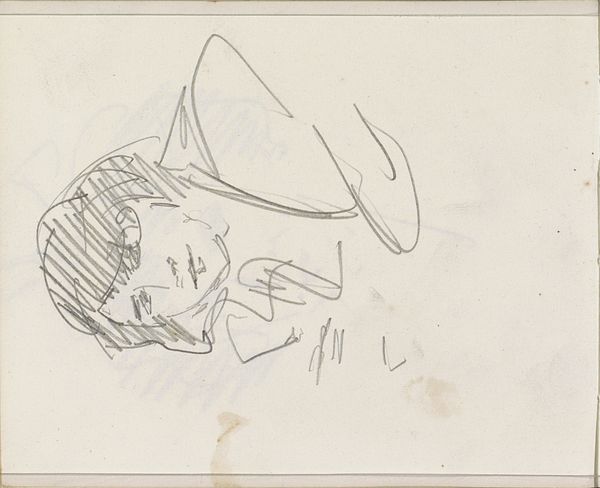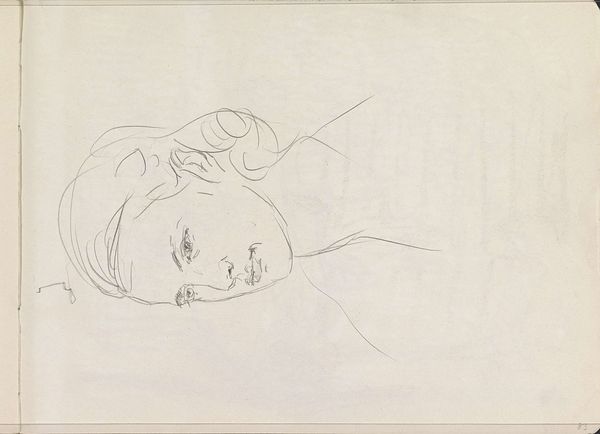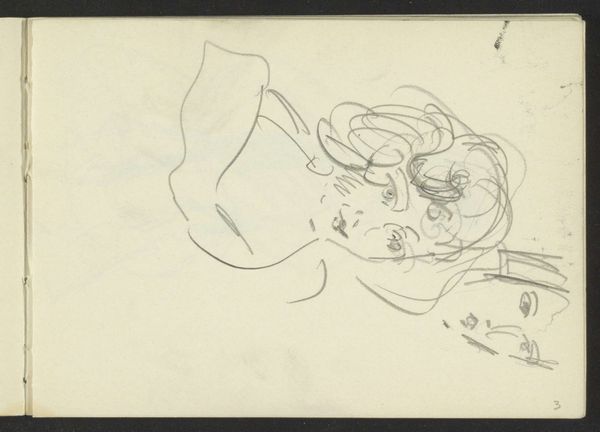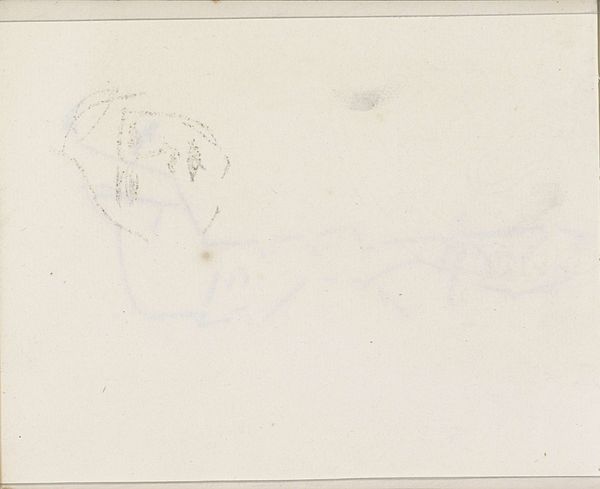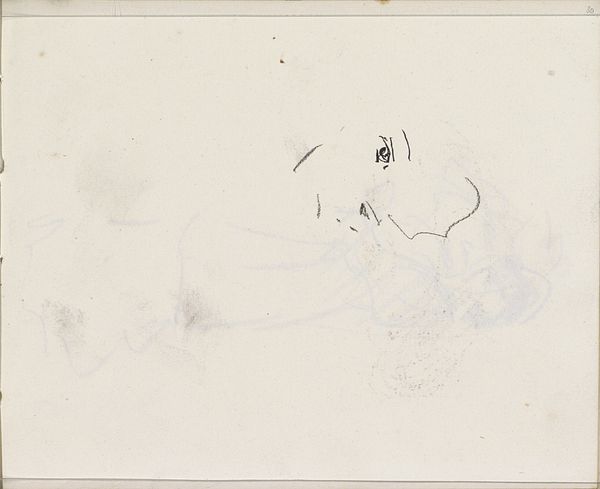
Copyright: Rijks Museum: Open Domain
Curator: This delicate pencil drawing is titled "Vrouwenhoofd met hoed," or "Head of a Woman with Hat," by Isaac Israels. It’s held here at the Rijksmuseum, and was likely created sometime between 1875 and 1934. What strikes you initially? Editor: There's such quietness about it. The economy of line makes her seem almost ephemeral, as if she might vanish if you look away. It feels incomplete, yet suggestive. Curator: Indeed. Notice how Israels uses hatching to create volume in the woman’s hair and the brim of her hat, contrasted with the bare paper that defines much of her face. It exemplifies Impressionistic sensibilities, capturing a fleeting moment rather than striving for photorealistic detail. It's a study in tonal variation, primarily using shades of gray achieved through pencil. Editor: I wonder who she was. Drawings such as this offer a glimpse into the artist's world, capturing figures from their daily life—often unacknowledged women in modern society. Is this image challenging established conventions of female representation by depicting a nameless working-class figure, in contrast to the often-idealized portraiture of the time? Curator: An astute observation. The drawing isn't explicitly political, but one can certainly see it within the broader context of representing modern life. The gestural strokes embody the fleeting nature of experience. It is through line, through its elegance, its fragility that the artist brings something powerful out of, quite literally, nothing. Editor: Agreed. The use of negative space is striking; it focuses our attention, almost as a kind of spotlight, framing this individual woman, whose gaze suggests both fatigue and an underlying strength, reflective of working women’s everyday realities. We fill in the missing parts, constructing her narrative from the minimal cues we're given. Curator: And that’s the marvel of such drawings, isn’t it? The interplay between what’s shown and what’s implied invites us, as viewers, into a collaborative act of creation. Editor: It reminds us to pause and appreciate these almost forgotten fragments, and by seeing her, maybe we can understand the struggles of unrecorded women a bit more deeply. Curator: Very well said. I will think of your observation next time I examine it. Editor: And I'll consider your point about line. It brings to mind how a seemingly small detail can define an entire artwork, a whole movement even.
Comments
No comments
Be the first to comment and join the conversation on the ultimate creative platform.
